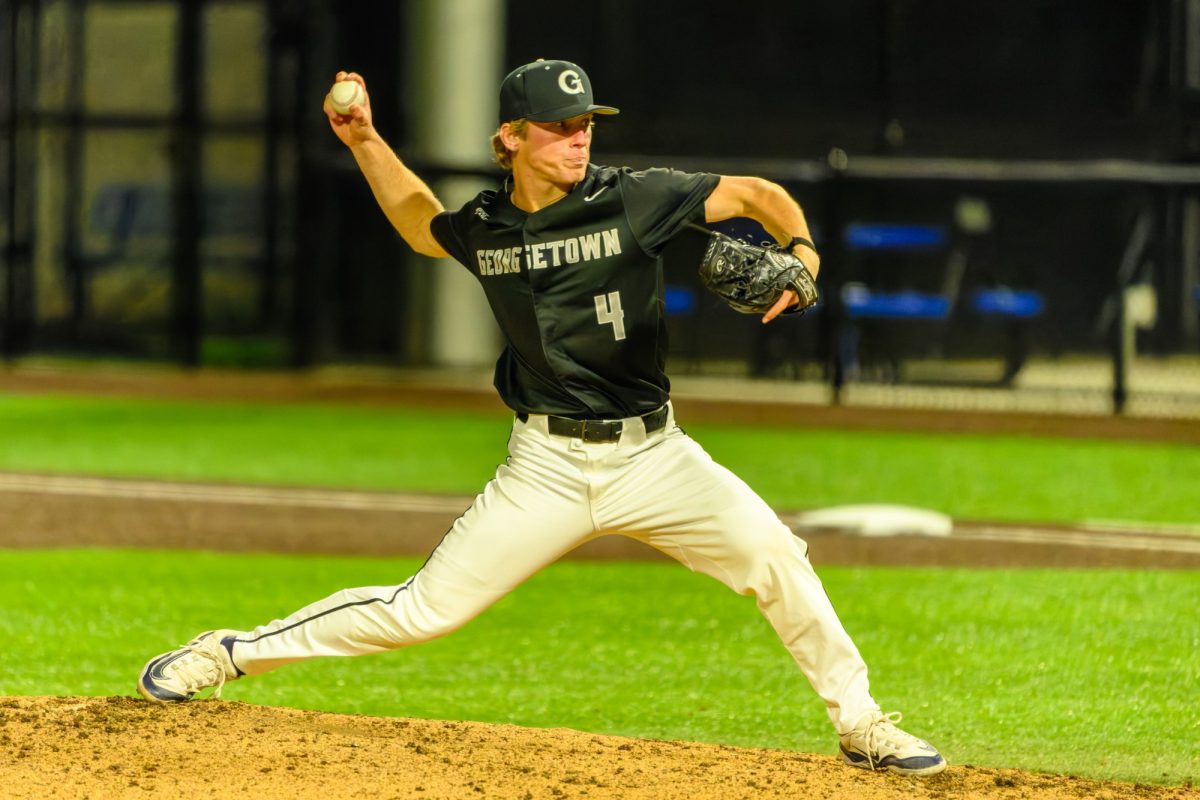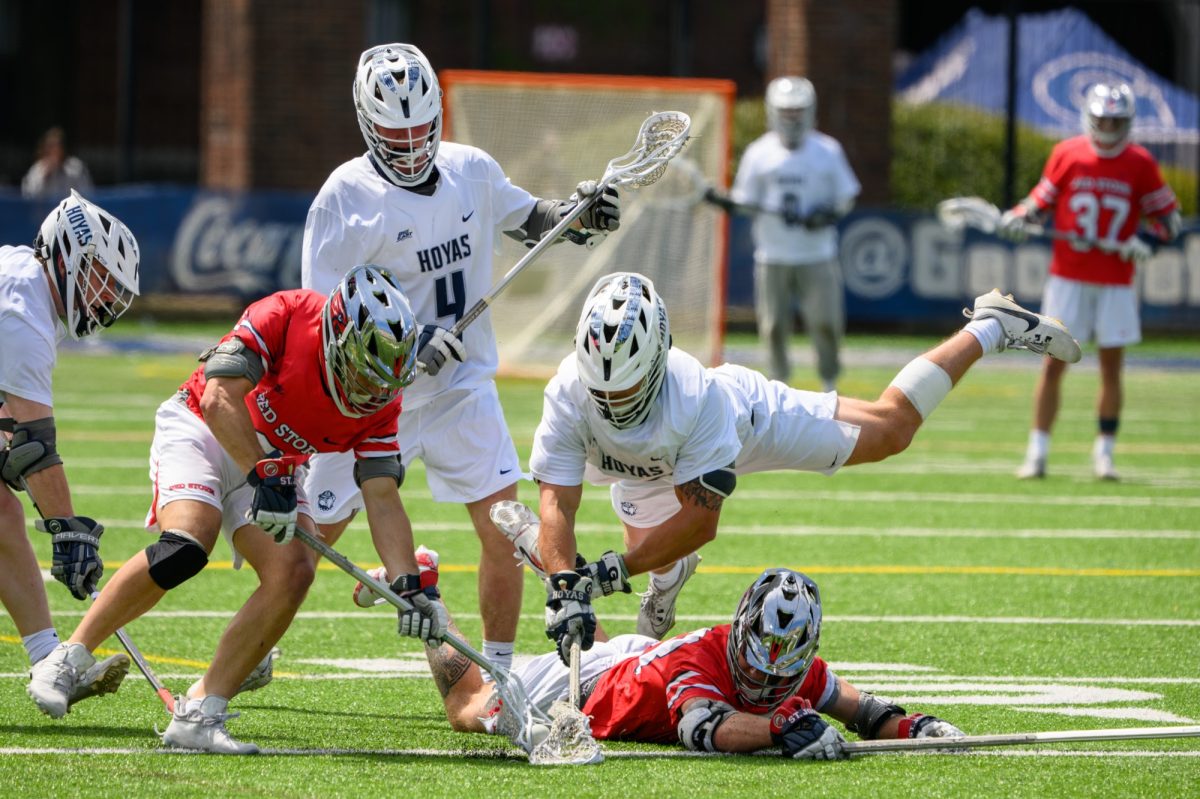Consensus All-American. Three-time First Team All-NBA. Eleven-time All-Star. Four-time scoring champion. All-Star game MVP. League MVP. Cultural icon, cultural disaster, loudmouth, leader, legend, hero… the list goes on. Allen Iverson’s career was full of both success and controversy at extreme levels. As he lifted the Philadelphia 76ers to new playoffs heights and changed the way basketball is played, he also cemented his image as a thug, a bad-attitude superstar and a train wreck for any team that tried to sign him. Nevertheless, none of his professional success would have been possible without second chances — with one of the most significant opportunities coming in the form of a Georgetown scholarship.
In 1975, 15-year-old single mother Ann Iverson gave birth to Allen in Hampton, Va. From the outset, Iverson’s life was to be one of struggle, but it was in sports that he found solace. Iverson rose to stardom at Bethel High School as a running back and quarterback on the football team and point guard on the basketball team. He was named the Associated Press’ Player of the Year in both sports after leading his teams to state championships. Iverson’s future looked bright, but his dreams came to a halt at age 17 when he was convicted of maiming by a mob and sentenced to 15 years in prison, The governor pardoned Iverson after four months in prison, but his freedom was limited. He could not finish his senior year at Bethel and had to attend a correctional high school for “at-risk” students as he watched his hopes of playing college basketball dwindle.
But Iverson’s mother, who raised him alone and moved from job to job throughout his childhood, had one last card up her sleeve. She convinced Head Coach John Thompson Jr. to meet Iverson and offer him a full scholarship to Georgetown University.
During his freshman year, Iverson helped Georgetown advance to the Sweet 16 of the NCAA Tournament, earned the Big East Rookie of the Year honor and averaged 20.4 points, 3 assists and 3 steals per game. Iverson found greater success the following season, increasing his scoring average to 25 points per game and earning First Team All-American honors as he led the Hoyas to an Elite 8 appearance before leaving for the NBA in 1996.
Iverson’s success at Georgetown was particularly surprising as he was playing for a perennial powerhouse known primarily for forming excellent big men — but Iverson proved he would be the exception to Georgetown’s basketball tradition. Listed at exactly 6 feet and a mere 165 pounds, Iverson was the definition of tiny — but none of that would matter for the headstrong guard.
As the Philadelphia 76ers watched the draft lottery roll by and finally heard the last team called, they knew they had just won the drawing for the right to draft the Hoyas’ star guard. Drafted first overall, expectations were high for Iverson, but many questioned his attitude and behavior.
Still, the results were unquestionable. No one had ever seen anyone play like Iverson, from the way he dribbled, the way he passed and the way he somehow soared for putback dunks. Philadelphia was set ablaze with the ferocity of every crossover, the ripple of every swish—and, unfortunately, the clamor of Iverson’s candid and infamous press conferences.
Though Iverson’s success on the court was unparalleled, Head Coach Larry Brown became frustrated with his defiant behavior. Iverson skipped practice, prompting his infamous “We talkin’ bout practice, not a game, practice,” spiel, which has since remained an unforgettable audio excerpt.
In 2000, Iverson’s trade to the Detroit Pistons was all but completed, but fate gave the tumultuous Brown-Iverson relationship another chance. In the 2000-2001 season, the two mended their breaks, and Iverson led the league in scoring with over 31 points per game, leading an otherwise mediocre 76ers team all the way to the NBA Finals. Before losing the series to the Los Angeles Lakers, Iverson singlehandedly dismantled the Lakers’ supposedly impenetrable defense with a 48-point performance in an overtime thriller, handing the team its only playoff loss.
Though Iverson’s playoff performance peaked in 2001, he continued to dazzle fans until his retirement in 2010, fittingly with the 76ers, despite playing for three other teams throughout his career.
As Iverson held up his hand to his ear on May 2, 2014 to hear his favorite song one last time, 20,000 Philly fans cheered on, playing the tune for arguably the greatest scorer to ever play the game. And as his iconic number 3 ascended into the rafters, the storied career that almost never was became the storied career that always will be.
Hoya Saxa, Allen Iverson.




















